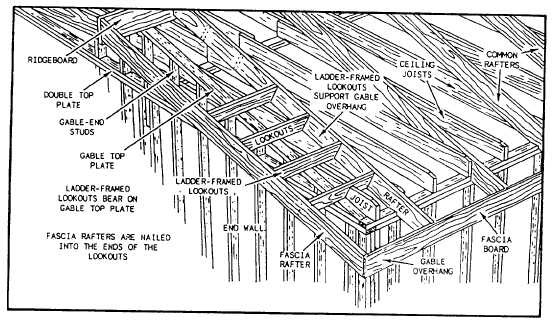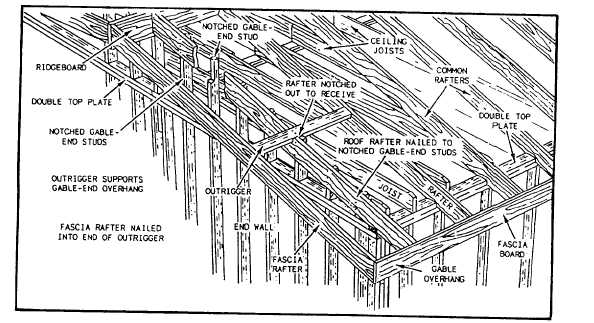Figure 2-27.-Gable-end overhang with the end wall framed under the overhang.
Figure 2-28.-Gable-end overhang with the end wall framed directly beneath the rafters.
This method guarantees that the line of the overhang will
be perfectly straight, even if the building is not.
Over each gable end of the building, another
overhang can be framed. The main framing members of
the gable-end overhang are the fascia, also referred to
as “fly” (or “barge”) rafters. They are tied to the
ridgeboard at the upper end and to the fascia board at
the lower end. Fascia boards are often nailed to the tail
ends of the common rafters to serve as a finish piece at
the edge of the roof. By extending past the gable ends
of the house, common rafters also help to support the
basic rafters.
Figures 2-27 and 2-28 show different methods used
to frame the gable-end overhang. In figure 2-27, a fascia
rafter is nailed to the ridgeboard and to the fascia board.
Blocking (not shown in the figures) rests on the end wall
and is nailed between the fascia rafter and the rafter next
to it. This section of the roof is further strengthened
when the roof sheathing is nailed to it. In figure 2-28,
two common rafters arc placed directly over the gable
2-18




